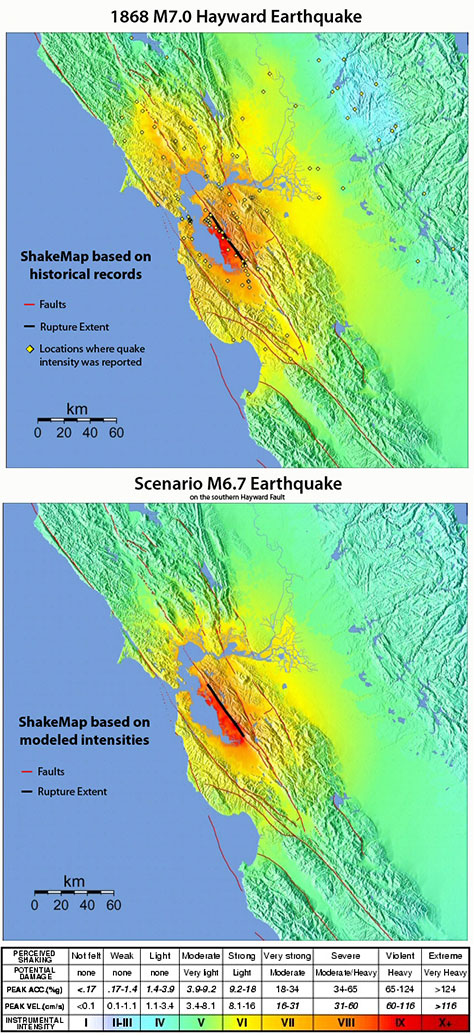
Earthquake Experts: Hayward Fault is a 'Tectonic Time Bomb'
Vic Lee - KGO
Experts Warn of the Next Big Quake on Anniversary of Loma Prieta
HAYWARD, Calif., Oct. 17, 2007 (KGO) - October 17th marks an auspicious anniversary. It was 18 years ago today that the 6.9 Loma Prieta earthquake struck the Bay Area.
The quake dislodged a segment of the Bay Bridge, collapsed the Cypress Freeway in Oakland, triggered a fire in San Francisco's Marina District and destroyed much of downtown Santa Cruz.
What you may not remember is that there was an even bigger quake 139 years ago on the Hayward fault which remains a ticking time bomb today.
The last big quake on the Hayward fault was in 1868. It was the 12th deadliest temblor in U.S. history.
"The 1868 Hayward earthquake which had a magnitude between 6.8 and 7, caused 30 deaths," says Jim DeMersman of the Hayward Historical Society.
A new map (pictured) of the earthquake from the U.S. Geological Survey shows Hayward and neighboring San Leandro suffered the most damage. However, there is still one lingering question.
"We don't know where the earthquake started. We don't know what the epicenter of the earthquake is," says Jack Boatwright with the U.S. Geological Survey.

We do know one thing...
"It's the most heavily urbanized fault in the U.S. and it's just waiting to go off," says David Schwartz with the U.S. Geological Survey.
David Schwartz is a leading earthquake geologist. He says downtown Hayward suffered most of the damage from the old earthquake.
The evidence is still here. Cracks line some of the parking lots.
"Whoever parks here during the day has no idea what they're parking over," says Schwartz.
One motorist parked right over the fault line.
David Schwartz: "If this slips, the back side of your car is in trouble."
Vic Lee: "Well, you might lose your car. You better park in another space."
Schwartz showed us the tip of a crack that extends down six miles below the surface and a curb that had been offset. One side of the curb is moving one way, the other side is moving the other way.
Schwartz also took us to the building which sits atop the fault line. The bolts are meant to strengthen it, but if you look closely you'll see the constant movement of the earth has created a bubble in the middle of the structure.
"The side of the building closest to Mission Boulevard is moving to the north. This side closest to us is moving to the south," explains Schwartz.
Research indicates the last five big earthquakes on the Hayward fault occurred at an average of once every 140 years. October of next year will be the 140th anniversary of the last one in 1868.
It has been estimated that only 10-percent of the Bay Area's population is ready for the "big one." If that "big one" hits on the Hayward fault, it may leave 100,000 people homeless, 58 buildings destroyed and more than 200 buildings heavily damaged. Total losses may number $28 billion dollars and several thousand deaths. Those statistics are from the U.S. Geological Survey.
http://abclocal.go.com/kgo/story?section=local&id=5712153
